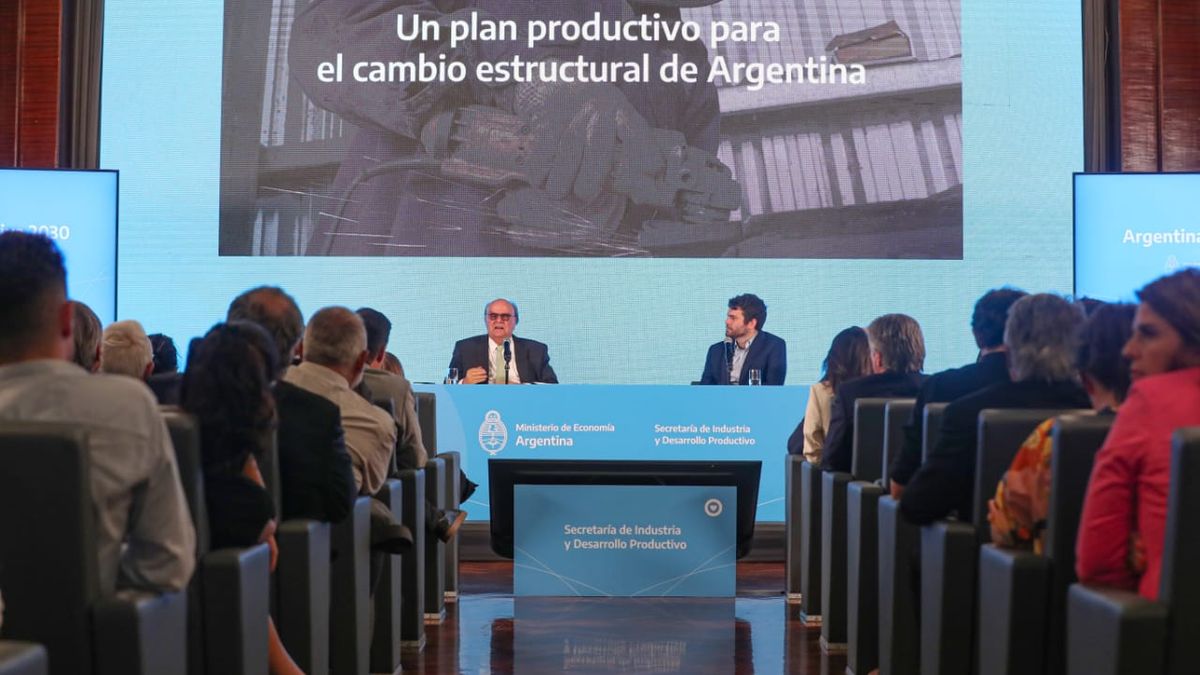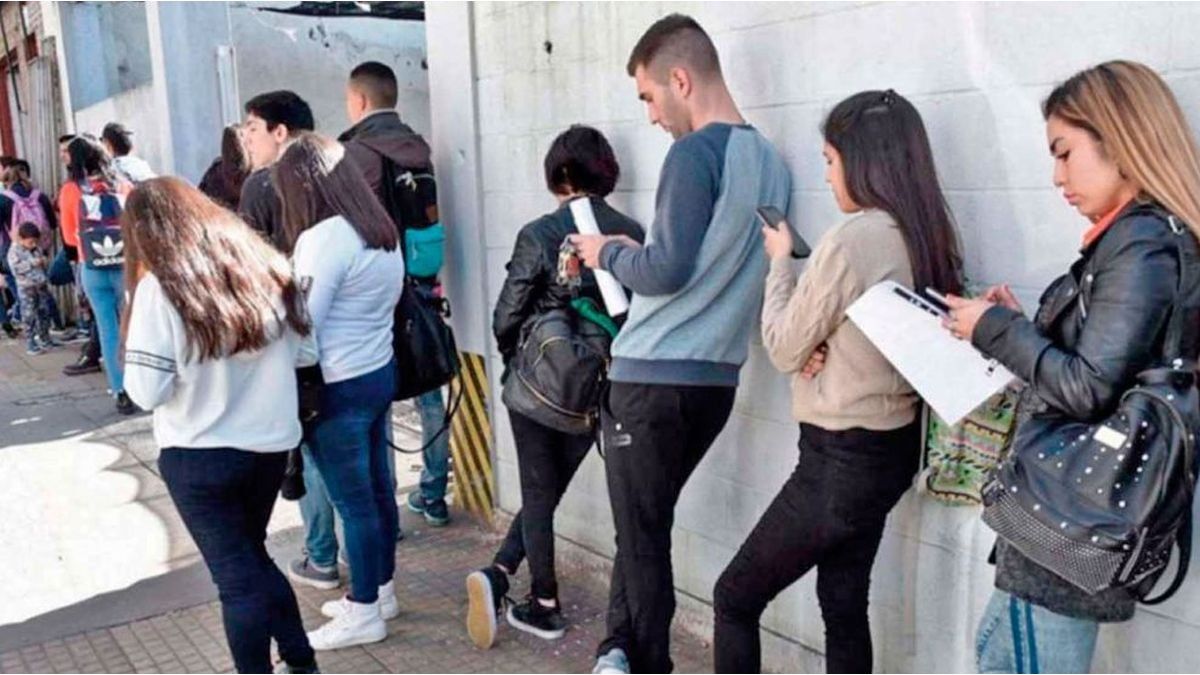The government launched a plan called “Productive Argentina 2030”which sets ambitious goals for the end of the decade: to double exports and take them to more than US$180,000 millioncut poverty in half, create more than 3.5 million jobs, reduce unemployment to 5%, create more than 100,000 companies and that there is a per capita growth of 30% by 2030.
For this, the Ministry of Industry, which heads José Ignacio “Vasco” de Mendiguren, presented this Tuesday the 11 axes of the plan, which proposes to change the productive matrix, through 500 policy guidelines, which include bills for tax relief, lower withholdings or free access to foreign currency. They will seek to discuss it with the opposition to achieve consensus, given the proximity of the presidential elections.
The detail of the plan was presented at the former Ministry of Productive Development by its coordinator daniel schteingart. He explained that the Argentine problem is the “impossibility of sustained growth, insufficient quality employment and high levels of poverty and inequality.” Since 1974, Argentina has been the second country in the world that has spent the most years in recession.
The diagnosis of the plan is that there are recurring crises due to “lack of dollars and an insufficiently dense and developed productive matrix.” That is why the program, embodied in a document of more than 3,000 pages, has an x-ray of the country’s productive problems, a review of what is happening in the world and a road map with policy recommendations, with more than 200 measurable quantitative goals.
The plan was announced a year ago, after the agreement with the IMF was closed, in a great act at the CCK, in which even the President had participated Alberto Fernandez. There, the former Minister of Productive Development, Matías Kulfas, announced that its writing would take a year. During the presentation on Tuesday, Schteingart assured that the program is based on 11 missionsa methodology of the Italian-American economist, Mariana Mazzucato.
missions plan.PNG
The 11 missions are: double exports; develop the green economy for a just environmental transition; produce more goods and services linked to health; promote the mobility of the future with national technologies; strengthen defense and national security through national high-tech developments; adapt food production; deepen the progress of digitization; develop mining potential with care for the environment; modernize traditional industrial sectors; create productive chains from the primary sector to generate more work; and, finally, promote tourism for sustainable territorial development.
“Today the biggest rift that Argentina has is between the real and the potential, it is unspeakable that we are where we are with the possibilities we have,” said de Mendiguren, before an audience with researchers, officials and a few businessmen. “We are at a turning point, we can jump into development definitively,” he added. But he highlighted: “With the resources we have we can decide if we want to be Nigeria or Norway.”
After reading each of the 11 missions in detail, Schteingart spoke about how to arrive at the projections: “All very nice, but how it would be through what we call State policies, which includes macroeconomic stabilization on the one hand. Without stabilization it is difficult to invest and grow, but also changing the matrix and generating foreign currency helps stabilization, it is a dog that bites its tail”, he affirmed. In addition, he added that the approval of pending bills is needed, some not dealt with in Congress, and others in preparation: the electromobility law, the promotion of hydrogen, LNG, hydrocarbons, an agro-industrial law and one on large investmentsthat enable large-scale projects in sectors such as petrochemicals.
exports plan.PNG

In the roadmap to double exports, the projection is that by 2030 the sector that will continue to contribute the greatest amount of foreign currency will be agro-industrial, with US$60,931 million, although it will be the one with the lowest growth, due to the fact that in Some expect a drop in the price of commodities. The sectors that are expected to add the most to the increase in exports are energy, with Vaca Muerta and LNG (u$s30,806 million); services, with knowledge and tourism (u$s22,150 million); and mining, with the rise of lithium, copper and potassium (USD 15,931 million).
Given the proximity to the presidential elections, de Mendiguren revealed, during a lunch with the press, that they had dialogue with part of the opposition during the assembly of the project, both with the PRO and with radicalism. “This has to force us to discuss in the campaign if we want an export model of raw materials or added value”said de Mendiguren. For his part, Schteingart assured: “There are many points of contact, it is possible to differ in how much to invest in industrial policy, but in the potential sectors there is more consensus than what is believed.” In any case, the plan does not include points that are in the economic programs of Together for Change, such as the free trade agreement between the European Union and Mercosur.
De Mendiguren also admitted the difficulties of implementing the plan. On the one hand, political, with a Congress practically paralyzed and without an internal agreement between the same coalition of the Frente de Todos. “We are ready for the laws to come out or, if not, we will implement them in some way,” he anticipated. But, on the other hand, economic difficulties, such as the lack of dollars as a result of the historic drought. On this point, he anticipated that this year’s plan is to get foreign currency from Brazil and China, and assist the agricultural sector. “We are desperate to lower the gap, but not for a sharp devaluation,” he concluded.
Source: Ambito




